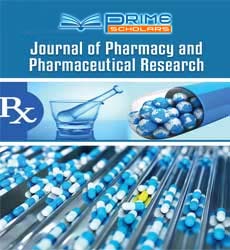Commentary - (2022) Volume 6, Issue 3
Symptoms and Signs of Placebo and It Effects
Sanna Roshi*
Department of Pharmacy, University of Bahir Dar, Ethiopia
*Correspondence:
Sanna Roshi, Department of Pharmacy, University of Bahir Dar,
Ethiopia,
Email:
Received: 01-Jun-2022, Manuscript No. IPIPR-22-13914;
Editor assigned: 03-Jun-2022, Pre QC No. IPIPR-22-13914 (QC);
Reviewed: 17-Jun-2022, QC No. IPIPR-22-13914;
Revised: 22-Jun-2022, Manuscript No. IPIPR-22-13914 (R);
Published:
30-Jun-2022, DOI: 10.21767/ipipr.6.3.15
Description
A counterfeit treatment is a counterfeit substance or treatment
intended to have no known medicinal value. Common fake treatments
include latent pills (like sugar pills), dormant IVs (like saline),
hoax surgeries, and other procedures. Typically, sham treatments
can affect how patients view their condition and stimulate the
body’s synthetic cycles to relieve pain and some other symptoms,
but have no effect on the disease itself. Improvements patients
experience after being treated with a sham treatment can also be
due to irrelevant variables, such as B. a fall back to the mean. The
use of counterfeit treatments in clinical medication raises moral
concerns, especially under the assumption that they are disguised
as a working therapy, as this introduces unscrupulousness into the
specialist relationship and circumvents informed consent. While
it was once thought that this misdirection was necessary for fake
treatments to make an impact, there is currently evidence that
fake treatments can make an impact in any case where the patient
knows the therapy is a placebo. In drug testing and clinical
research, a fake treatment may look like a working prescription or
treatment to serve as a control; this is to prevent the beneficiary
or others (with their consent) from knowing whether a treatment
is dynamic or latent, as assumptions about feasibility may affect
results. In a controlled pre-clinical study with sham treatment, any
adjustment of the benchmark group is called a sham treatment
response, and the distinction between this and the consequence
of no treatment is a self-biased consequence. Some specialists
are currently suggesting that trial treatment and topical treatment,
whenever the situation permits, be contrasted with sham
treatment. The possibility of a self-influencing consequence - a
healing success from a dormant treatment - was investigated in
brain research, but turned out to be clearer in the 20th century. A
compelling review entitled “The Powerful Placebo” adamantly acknowledged
the possibility that self-affected outcomes were clinically
significant and a consequence of the cerebrum’s role in actual
well-being. A reassessment found no evidence of self-biased consequence
in the source information because the review had not shown a reversion to the mean. a self-directed consequence is the
contrast between this response and no treatment. For example,
false treatment response includes improvements due to normal
healing, declines due to regular disease movement, the propensity
of individuals who briefly felt better or more unfortunate than
expected to return to their normal circumstances (relapse towards
the mean), and also errors in the clinical antecedents, which can
give the impression that a change has taken place when nothing
has changed. It is also important for the recorded response to any
dynamic clinical intercession. Fake treatments are accepted to alter
a person’s perception of pain. A person might consider a severe
aggravation as an uncomfortable tremor.
Conclusion
A nocebo effect occurs when the user of an inactive substance
reports an adverse outcome or worsening of side effects, where
the result does not stem from the actual substance but from negative
assumptions about the treatment. Another adverse result is
that fake treatments can because side effects associated with real
treatments. The inability to limit nocebo secondary effects in clinical
preparations and in clinical practice raises several moral issues
that have been studied recently. Withdrawal symptoms can also
occur after sham treatments. This was found, for example, after
the Women’s Health Initiative investigation into chemical substitution
treatment for menopause was dropped. Women were typically
in sham treatment for years.
Acknowledgement
The author is grateful to the journal editor and the anonymous
reviewers for their helpful comments and suggestions.
Conflict of Interest
The author declared no potential conflicts of interest for the research,
authorship, and/or publication of this article.
Citation: Sanna R (2022) Symptoms and Signs of Placebo and It Effects. J Pharm Pharm Res Vol.6 No.3:15
Copyright: © Sanna R. This is an open-access article distributed under the terms of the Creative Commons Attribution License,
which permits unrestricted use, distribution, and reproduction in any medium, provided the original author and source are
credited

